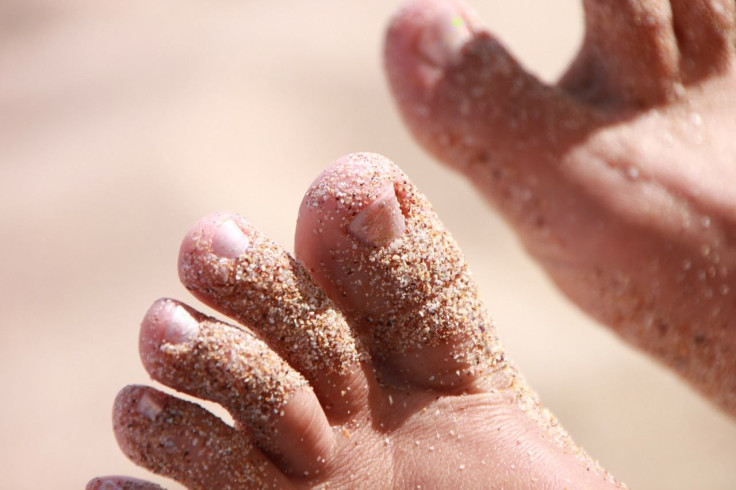This Little Piggy, Explained: People Can't Tell Middle Three Toes Apart With Eyes Shut

We should all be able to tell our toes apart with our eyes open, but what about when they’re closed? If you just tried it and only counted nine toes, then either you actually have nine toes or you just proved what researchers found in a new study reported in the journal Perception. Researchers found it’s common for half of us to think we’re missing a toe, specifically the one next to our big toe, when touching them with our eyes closed.
“The results confirmed some earlier research that suggested people could find it harder to distinguish between their toes than their fingers,” said Dr. Nela Cicmil, from Oxford University’s Department of Physiology, Anatomy, and Genetic, in a press release. “People could correctly identify the finger being stimulated in 99 percent of cases.”
Most of us would like to believe we have a pretty good idea of where our various body parts are located, so why do we have a problem telling our toes apart?
For the small study, a total of 19 healthy young men and women between the ages of 22 and 34 were asked to close their eyes while their toes were gently poked, one at a time. This process was repeated over and over again, and each time the participants were asked what toe was being touched. Surprisingly, more than half of the volunteers reported some rendition of: “I honestly don’t feel like I have a second toe” or “I can’t feel where my second toe is.”
The participants were able to correctly guess when their big or little toe was being touched 94 percent of the time, but they struggled to tell the difference between the three middle toes. They could only tell these were being touched, from closest to their big toe to closest to their little toe (57, 60, and 79 percent of the time, respectively). A common trend was they often thought their third toe was being poked when it was actually their second toe. Then, when their third toe was poked, they often thought it was their fourth toe.
“The key issue was distinguishing between the second and third toes [the toes next to the big toe],” Cicmil said.
This confusion was more likely to arise when their non-dominant foot was being tested — the left foot for a right-handed person. The researchers speculate toes may be more difficult to tell apart than fingers because they are crammed together and have less independent movement than fingers. However, the researchers also believe we’re affected by how the brain perceives body parts. The brain doesn’t perceive them as the five toes that they are, but rather five spaces equal in length and width, meaning one space for each toe. By this reasoning, the average big toe takes up two spaces, which may explain why the participants thought their second toe was missing.
The brain uses several mechanisms, including visual perception and memory, and a sense known as “proprioception,” or positive sense, to view the body. Proprioception is the brain’s ability to use the nervous system to identify skin, muscles, and joints relative to where the body is in space. However, our brains do not always perceive our bodies accurately.
A 2010 study published in the journal Current Biology found participants perceived their hands to be approximately two-thirds wider and one-third shorter than they actually were. The researchers attributed these misconceptions to the way the brain models different parts of the skin.
The researchers caution that misidentifying the size or shape of your hands or toes is normal, and that these tests should not be used to diagnose brain damage. Rather, the findings can be used to help better understand conditions that result in agnosia — the belief that body parts are missing or of a different shape or size.This condition usually affects a single information pathway in the brain, depending on the type of agnosia a person has.
So, can you tell all your toes apart with your eyes closed?
Sources: Cicmil N, et al. Confusion Afoot. Perception. 2015.
Longo, Kammers, Gomi et al. Contraction of body representation induced by proprioceptive conflict. Current Biology. 2010.



























